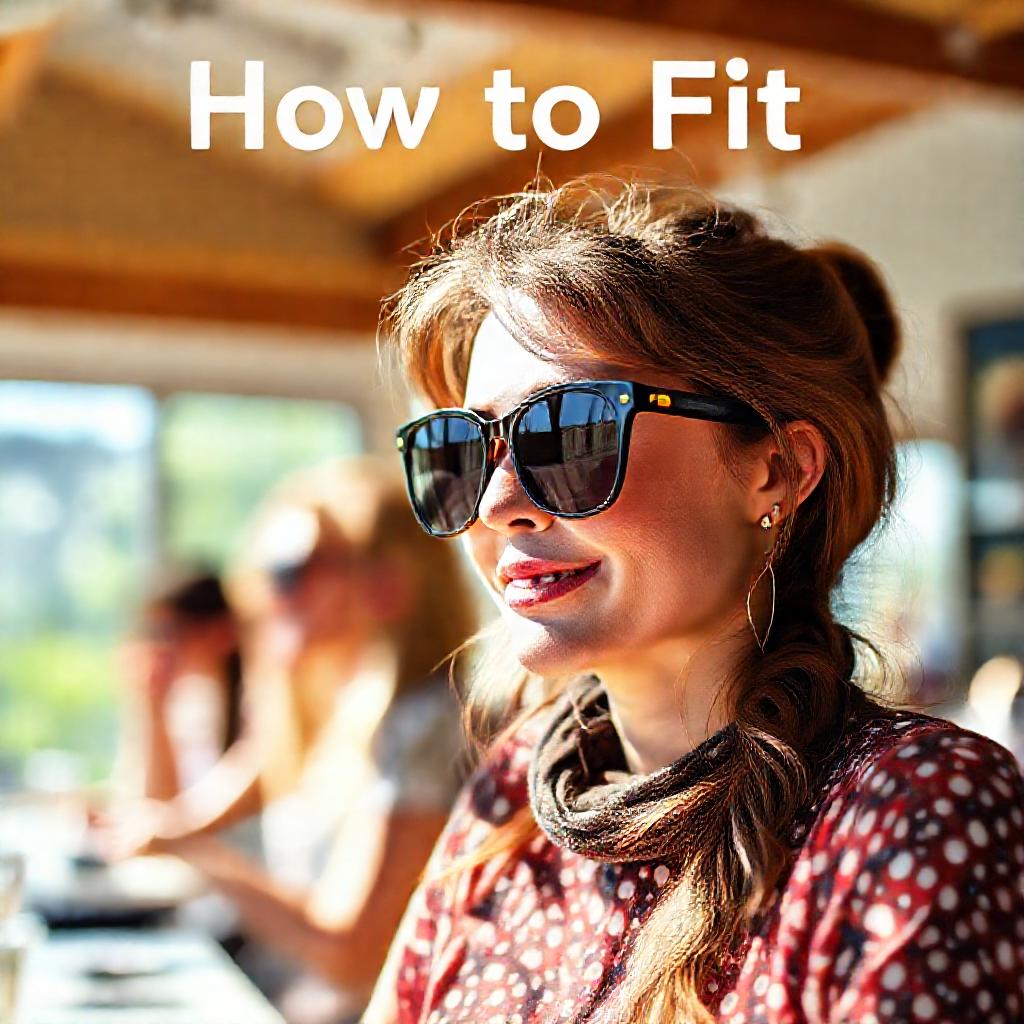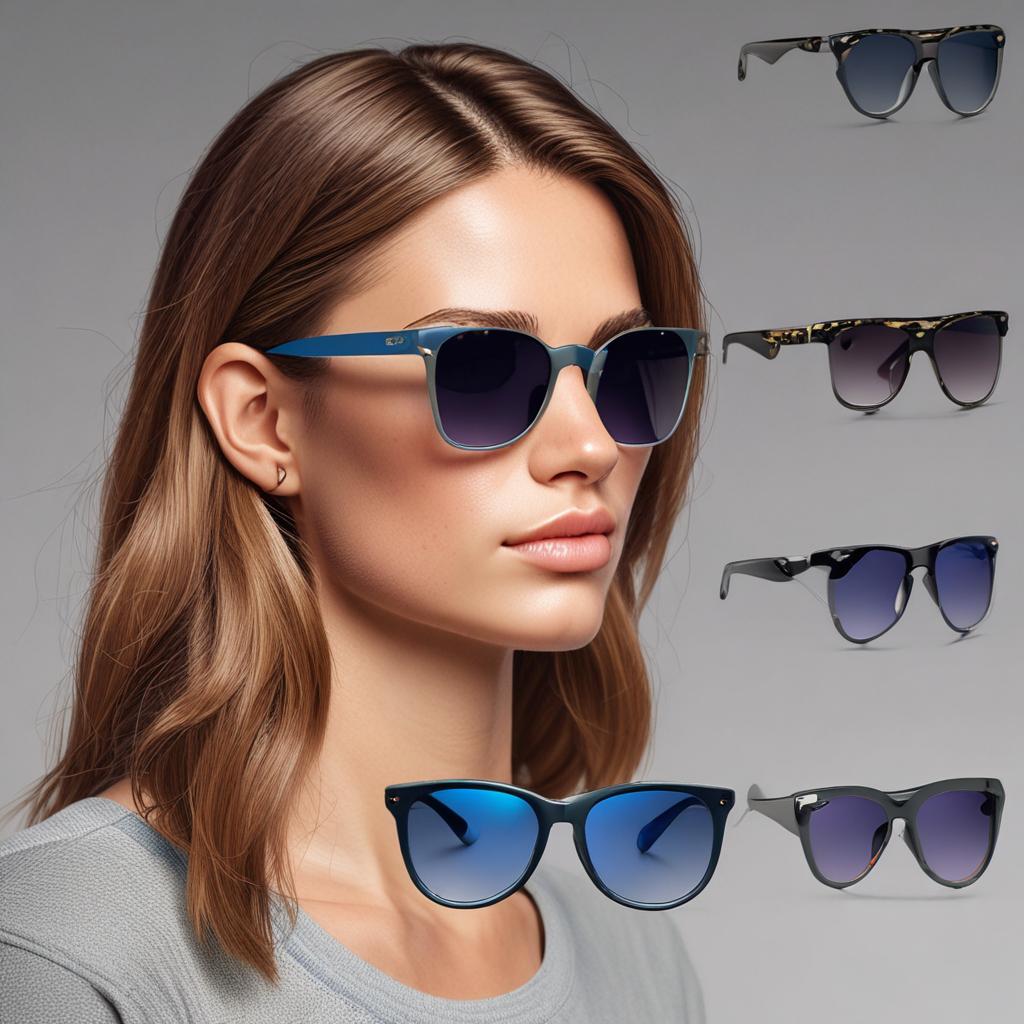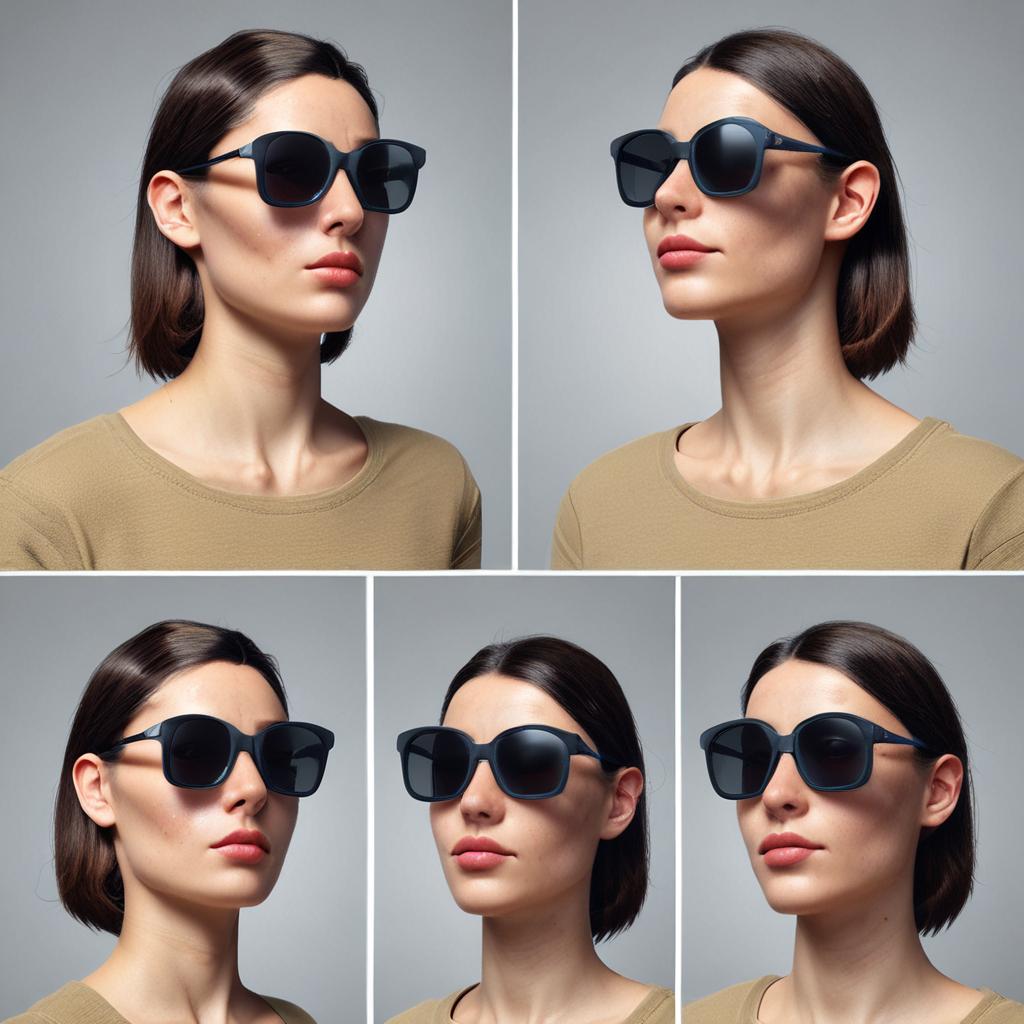How to Fit Sunglasses

Ever squinted through awkwardly large sunglasses or struggled with frames that slide down your nose? You’re not alone. Finding the perfect pair isn’t just about looking cool—it’s about comfort, protecting your eyes, and complementing your features. The right fit can transform your sunglasses from a fashion faux pas to a staple accessory you reach for daily. In this guide, we’ll walk you through the essentials of fitting sunglasses to ensure they stay put, feel great, and enhance your style without compromising function.
Step-by-Step Process
Choose the Right Size
Measure your face and select frames that fit comfortably.
Adjust the Temples
Bend the temple arms to match the angle of your ears.
Position the Bridge
Ensure the bridge sits snugly on the nose without pinching.
Check the Lens Coverage
Verify the lenses cover your eyes fully without gaps.
Test for Comfort
Wear the sunglasses for a while to ensure they stay secure.
Process infographic for How to Fit Sunglasses
Understanding Sunglasses Fit: Key Factors to Consider
A well-fitted pair of sunglasses depends on more than just your preferences—it’s about science and aesthetics. Two critical elements to evaluate are your face shape and the proportions of the frames.
Face Shape and Frame Style
Your face shape determines which frames will flatter and secure your sunglasses best. Here’s a quick guide:
- Round Face: Opt for angular frames like rectangular or cat-eye to add definition.
- Oval Face: Most styles work, but classic aviators or ovals balance your proportions.
- Square Face: Soften strong jawlines with rounded frames like wayfarers or tortoiseshell.
- Heart Face: Choose frames wider at the top (e.g., aviators or browline) to balance a narrow chin.
- Diamond Face: Go for full-rimmed, rounded frames to soften sharp cheekbones.
Proportions and Measurements
Three measurements are crucial: bridge width, temple length, and lens height. A bridge that’s too narrow can dig into your nose, while one that’s too wide creates gaps. Temple length should match the distance from your ear to the temple without pulling your head. Lens height ensures adequate coverage—especially important for UV protection.
How to Measure Your Face for the Perfect Sunglasses Fit
Grab a mirror, a piece of string, and a ruler. Here’s how to identify your face shape and key dimensions.
DIY Face Shape Assessment
Hold the string around your head like a headband, mark where it overlaps, and measure the length. Compare your face’s width (cheekbones) to its length (forehead to chin):
- If width is about 75% of length, you likely have an oval shape.
- If width and length are nearly equal, a round shape fits you best.
- For square faces, look for a strong jawline and wide temples.
Measuring Bridge Width
Use a ruler to measure the space between your cheekbones. Compare this to the bridge width on sunglasses (usually listed as a number between the two lenses). A mismatch here can cause slipping or pressure.
Temple Length and Nose Pad Adjustment
Extend your arm to measure from the ear to the temple. For nose pads, gently adjust them to align with the bridge of your nose. If they’re too high or low, the glasses will shift.
Trying on Sunglasses: Techniques for Testing the Fit
Whether shopping in-store or online, test sunglasses thoroughly before buying.
In-Store Fitting Checklist
Hold frames up to your face and check if the lenses align with your eyes and sit above your eyebrows. Ensure they cover your entire eye area and don’t dig into your skin. Try walking to see how they stay on during movement.
Test in Different Environments
Try on sunglasses in natural light to assess lens coverage. If you wear them for activities like driving or sports, test for stability and peripheral visibility. A pair that’s perfect indoors might falter under bright sun or physical exertion.
Adjusting Sunglasses for a Custom Fit
Minor tweaks can make a big difference.
At-Home Adjustments
Use a cloth-covered heat source to warm the temples before gently bending them. For nose pads, twist the screws with a small tool to raise or lower them. Avoid over-tightening, which can warp frames.
Professional Adjustments
If DIY fixes don’t work, opticians can reshape lenses, adjust temple angles, or replace nose pads. This is especially useful for prescription or high-performance sunglasses.
Common Fitting Mistakes to Avoid
Even small errors can ruin your experience.
Oversized or Undersized Frames
Too big, and they’ll slip; too small, and they’ll leave pressure marks. Always prioritize frames that align with your facial measurements.
Ignoring Lens Coverage
Lenses should extend beyond your eye sockets to block UV rays from the sides. A narrow frame might sacrifice protection for style.
Skipping the Temples Check
Mismatched temples can cause headaches or make the glasses feel loose. Ensure they rest comfortably against your ears without pulling back.
Tips for Different Sunglasses Styles
Not all styles fit the same.
Rimless vs. Full-Rim Frames
Rimless designs suit smaller faces by creating a lightweight look, while full-rim frames offer more structure for larger or angular faces.
Wraparound vs. Aviator Designs
Wraparounds are ideal for sports due to their secure fit, while aviators add a timeless touch for casual wear.
When to Seek Professional Help
Some situations demand expert attention.
Prescription Sunglasses
Custom fitting ensures lenses align with your prescription and face shape for clarity and comfort.
Sports or High-Functionality Sunglasses
Professionals can optimize fit for sweat resistance and durability, essential for active lifestyles.
Eye Conditions Requiring Specific Fittings
Conditions like astigmatism or binocular vision issues need precise lens alignment to avoid discomfort.
Conclusion
Fitting sunglasses perfectly is a blend of measurement, trial, and adjustment. By understanding your face shape, testing proportions, and avoiding common errors, you’ll find a pair that’s both stylish and functional. Remember, the right fit protects your eyes and boosts your confidence. Visit an optician for tailored advice or use online tools to refine your search. Happy shopping!
FAQ: How to Fit Sunglasses
1. How do I know my sunglasses are the right size?
Check that the lenses fully cover your eyes, the bridge sits comfortably, and the temples match your head’s curve without slipping or pinching.
2. Can I adjust sunglasses temples at home, and how?
Yes—use a hairdryer on a low heat setting to warm the temples, then gently bend them while wrapped in a soft cloth to prevent damage.

3. What should I do if my sunglasses keep sliding down my nose?
Adjust nose pads to sit level with your bridge, or add grip-enhancing nose pieces. If that fails, consult an optician for a professional fit.

4. Do face shape recommendations apply to all sunglass styles?
While face shape guides are a helpful starting point, personal style and comfort are equally important. Experiment to find your favorite look.
5. Are online sunglasses fitting tools reliable?
They’re a good resource for size estimates, but in-person fittings ensure accuracy. Many brands offer virtual try-ons with adjustable measurements for a middle ground.
| Face Shape | Recommended Frame Style |
|---|---|
| Round | Rectangular, Aviator |
| Oval | Oval, Square |
| Square | Rounded, Wayfarer |
| Heart | Full-rimmed, Rounded |
| Diamond | Round, Oval |
For more tips on enhancing your look, explore our guide on how to choose sunglass color for a complete style upgrade.
